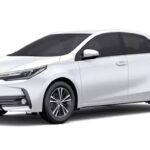When it comes to enhancing engine performance, two popular methods stand out: turbochargers and superchargers. Both systems are designed to increase an engine’s power output by forcing more air into the combustion chamber, allowing for a better fuel-air mixture and increasing efficiency. However, they operate differently and have distinct advantages and disadvantages. In this article, we will explore the differences, benefits, and practical applications of turbochargers and superchargers to help you determine which is the better option for boosting your engine’s performance.
Understanding the Basics
What is a Turbocharger?
A turbocharger is a forced induction system that uses exhaust gases to spin a turbine, which in turn compresses incoming air into the engine. This process allows for greater air density and increases the amount of oxygen available for combustion. The key components of a turbocharger include:
- Turbine Wheel: Driven by exhaust gases.
- Compressor Wheel: Compresses incoming air.
- Intercooler: Cools the compressed air before it enters the engine.
What is a Supercharger?
A supercharger is also a forced induction system, but it is mechanically driven by the engine’s crankshaft. This means that it uses power from the engine to compress air and increase its density. The main components of a supercharger include:
- Compressor: Compresses air and increases density.
- Drive Belt: Connects the supercharger to the engine’s crankshaft.
Comparison of Turbochargers and Superchargers
Operating Mechanism
| Feature | Turbocharger | Supercharger |
|---|---|---|
| Power Source | Exhaust gases | Engine crankshaft |
| Boost Response | Lag (may take time to spool up) | Immediate (instant boost) |
| Efficiency | Generally more efficient | Less efficient (uses engine power) |
Advantages and Disadvantages
Turbocharger
Advantages:
More efficient fuel consumption Higher power output with less engine displacement Utilizes waste exhaust gases Disadvantages:
- Turbo lag (delay in power delivery)
- Potentially more complex installation
Supercharger
Advantages:
Immediate power delivery Simpler installation and setup Better for low RPM power Disadvantages:
- Less efficient (drains engine power)
- Can increase engine temperatures
Real-World Applications
Turbocharged Engines
Turbochargers are commonly found in a variety of vehicles, especially in performance and economy cars. Some popular examples include:
- Volkswagen Golf GTI: Known for its turbocharged inline-four engine, offering a balance of performance and efficiency.
- Ford F-150: The EcoBoost series features turbocharged V6 engines that provide impressive towing capacity and fuel economy.
- Porsche 911 Turbo: A high-performance sports car with a turbocharged flat-six engine that delivers exhilarating speed and handling.
Supercharged Engines
Superchargers are often found in high-performance vehicles, particularly those designed for drag racing or muscle cars. Examples include:
- Dodge Challenger SRT Hellcat: Features a supercharged V8 engine that produces over 700 horsepower.
- Chevrolet Corvette Z06: Uses a supercharged V8 to achieve remarkable acceleration and speed.
- Audi S4: Equipped with a supercharged V6, delivering a perfect mix of luxury and performance.
Factors to Consider When Choosing Between Turbochargers and Superchargers
Engine Type
The type of engine you have can significantly influence your choice. Turbochargers are generally more effective for smaller engines due to their efficiency in increasing power without increasing displacement. Conversely, superchargers may be better suited for larger V8 engines, where immediate power is a priority.
Driving Style
Your driving style and preferences should also play a role in your decision. If you prefer immediate throttle response for city driving or track performance, a supercharger may be the better choice. However, if you are looking for efficiency and higher power output on the highway, a turbocharger could be more advantageous.
Budget and Maintenance
Both systems come with their own costs and maintenance requirements. Turbochargers, while generally more efficient, can be more complex and may require additional cooling systems. Superchargers, being mechanically driven, can put a strain on the engine, potentially leading to more wear and tear. Consider your budget for installation and long-term maintenance when making your choice.
Frequently Asked Questions (FAQ)
What is turbo lag?
Turbo lag refers to the delay in power delivery when a turbocharger is first engaged. This happens because the turbo relies on exhaust gases to spin up and create boost. Until the turbo reaches its optimal speed, there may be a noticeable gap in acceleration.
Can a car have both a turbocharger and a supercharger?
Yes, some performance vehicles utilize both a turbocharger and a supercharger, a configuration known as a twincharged system. This setup allows for both immediate power delivery from the supercharger and added efficiency and power from the turbocharger, providing a broad power band.
Which is better for fuel efficiency?
Generally, turbochargers are better for fuel efficiency compared to superchargers. This is because turbochargers utilize waste exhaust gases to generate power, while superchargers draw power directly from the engine, which can lead to decreased fuel efficiency.
Are turbochargers more reliable than superchargers?
Reliability can vary based on the specific application and installation quality. However, turbochargers may require more maintenance due to their complexity and reliance on exhaust gases. Superchargers, while simpler, can cause additional strain on the engine, which may lead to reliability concerns over time.
Conclusion
Choosing between a turbocharger and a supercharger ultimately depends on your specific needs and preferences. Turbochargers offer greater efficiency and higher power output at the cost of potential lag, making them ideal for fuel-conscious drivers and those seeking to maximize performance in smaller engines. On the other hand, superchargers provide immediate power delivery, making them perfect for performance enthusiasts who prioritize responsiveness and acceleration.
In summary, both systems have their strengths and weaknesses, and the best choice will depend on factors such as your driving style, engine type, and budget. As automotive technology continues to evolve, the debate between turbochargers and superchargers remains a crucial consideration for anyone looking to enhance their engine’s performance.

